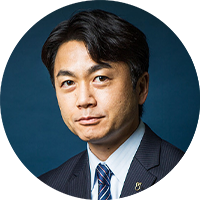Coach's VIEW is a business column authored by executive coaches in COACH A, aimed at providing valuable insights and effective approaches for leveraging coaching to foster organizational and leadership development. The column draws on the latest coaching trends and data, as well as insights from notable global publications on coaching.
Discovering Truth: Navigating the Shift from Drama to Reality

Ken, a friendly and cheerful coaching client, entered the room with his usual cheerful greeting. However, there was a miscommunication between us regarding the session schedule for that day. Recognizing the mistake, I promptly apologized to him before we started. Once the session began, I immediately sensed that something was amiss. Ken's expression became tense, and he spoke less than usual. Strangely, I also began to feel suffocated, with sweaty hands and a forehead dampened by anxiety.
Realizing that there was an issue, I paused the session and shared my observations with Ken. I mentioned the difference in his facial expression, his reduced communication, and the change in his voice tone. Feeling tense in a way I had never experienced before, I asked him how he was feeling. Ken closed his eyes, took a moment of silence, and then uttered unexpected words: "Don't apologize to me." His tone of voice was unusual, and he seemed somewhat lost in thought, reflecting on something.
With curiosity, I asked if he was reflecting on something specific. Ken met my gaze directly and nodded in affirmation.
"It was when you apologized to me before the session," he said, revealing his embarrassment.
Ken proceeded to share his deep admiration and respect for his father, who had imparted to him an imperial philosophy of leadership. According to his father's teachings, one should always be impeccably prepared to avoid situations that necessitate an apology. Since then, Ken had carried a strong sense of responsibility and imposed a standard of "perfection" on himself and others.
The Psychological Phenomenon of Parallel Process
A significant observation here is that the past relationship between Ken and his father has influenced his current relationship with me. This phenomenon is technically referred to as a "parallel process," which commonly emerges in coaching and management contexts. It manifests through two patterns:
- Transference: The client or subordinate unconsciously overlays and projects their past relationship patterns and thoughts onto the coach or superior.
- Reverse transference: The coach or superior projects their past relationship patterns and thoughts onto the client or subordinate.
It is worth noting that this parallel process occurs frequently in our day-to-day interactions. Recently, a coach sought my advice on a coaching matter. The coach explained that their client had not been forthcoming and open-minded during their coaching sessions, leading the coach to feel powerless. However, upon attentive listening, I observed that the client's blunt communication style resembled that of another client with whom the coach had previously struggled. The coach had experienced similar powerless feelings in the past and still found it challenging to engage with individuals who possess a blunt communication style. Essentially, we began to realize that the coach's ability to effectively work with clients exhibiting this specific communication style was an area of concern.
Similar dynamics can occur in the realm of management. For instance, a manager once stated, "Team member engagement is declining because the company's vision and purpose are not being clearly communicated to them. Therefore, the management of this organization needs to change." However, it is possible that the manager themselves is experiencing frustration because they struggle to provide adequate responses to questions regarding vision and perspective posed by their subordinates. Over time, the questions directed at the manager and the manager's own frustration begin to be redirected towards the organization and the superiors. This represents another instance of a parallel process. It is quite common for individuals to criticize others as a reflection of their own critical feelings or their perceptions of those feelings (e.g., frustration) within their own mind.
The question then arises: How can we effectively address these psychological phenomena unfolding within our organizations?
How to Deal with Parallel Process
In the book(*1) written by Jenny Rogers, a British coaching practitioner, she analyzes the background behind the parallel process as follows.
By actively listening and empathizing with someone who is speaking to you, you unconsciously strive to comprehend their issues on a deep level. This process often involves immersing yourself in their perspective, searching for common ground between their experiences and your own. As a result, the person speaking may instinctively recreate the intensity and urgency of their problem, hoping that the listener can somehow provide a solution. However, the listener may feel uncertain about how to effectively handle the other person's heightened emotions. This can lead to anxiety and a sense of panic within the listener's mind. According to Rogers, this last particular aspect may be the most significant phenomenon to consider in such situations.
Rogers puts forth practical and straightforward approaches to break free from parallelism. These techniques aim to interrupt the pattern and reevaluate the current relationship dynamics. They include:
- Change your sitting posture: Altering your physical position can help disrupt the trance-like state between the other person and their boss or coach.
- Take a short break: Engaging in activities like stretching or taking a coffee break provides a brief intermission that can contribute to shifting the dynamics.
- Introduce comments or questions that divert their focus from the issues: For instance, summarizing the conversation and asking for confirmation, or acknowledging the confusion and offering to revisit the current situation together.
The key emphasis lies in creating a pause and actively reexamining the existing relationship dynamics between yourself and others.
Deactivate Parallel Process
The manager's experience described earlier mirrors my own journey as a new manager in a previous job. When I shared my story with my boss at the time, they astutely remarked, "It seems like you're talking about your own engagement, isn't it?" It was a moment of realization for me as I discovered that I had been discussing my own engagement all along. The parallel process dissolved, and the external issues took on a new perspective, transforming into personal themes.
The narratives people construct, often with a critical tone, could be the dramas they have created for themselves. Instead of unquestioningly embracing these dramas and seeking resolutions, it can be beneficial to pause and deactivate the parallel process. Then, re-engage with the primary actors who are genuinely involved in the story. As the drama aligns more closely with the actual narrative, the problems may naturally dissipate.
【REFERENCE】
*1 “Coaching Skills” by Jenny Rogers, P93-94, Juri Tsurumi and Shoichi Tokunaga (translator), JMA Management Center Inc. 2022
*Regardless of profit, non-profit or intranet, secondary use such as copying, diversion, selling etc. is prohibited without permission.
Language: Japanese

